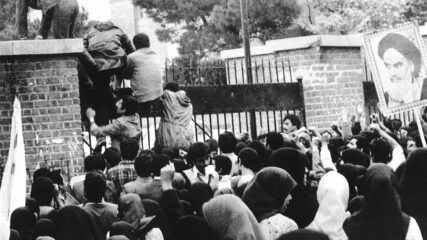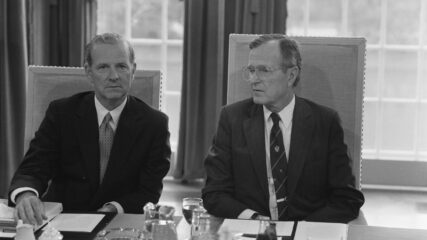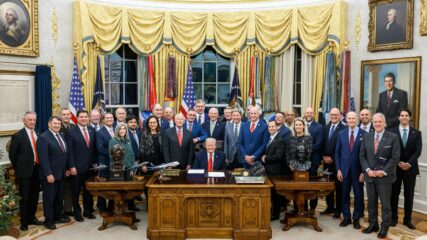April 11, 1961
“At 8:57 AM, the concealed door in the wall behind the bullet-proof glass dock opened quietly and Eichmann was ushered into the dock,” The Jerusalem Post reports April 12, 1961. “A ripple ran through the courtroom as the spectators realized that Eichmann had appeared. Everyone turned to look at him.” Thus begins the trial of Nazi war criminal Adolf Eichmann before a special panel of three judges: Supreme Court Justice Moshe Landau, Tel Aviv District Court President Yitzhak Raveh and Jerusalem District Court President Binyamin Halevi. The first day of the trial April 11 focuses on reading the charges, arguments for and against the impartiality of the judges, and whether Israel has jurisdiction.
Prime Minister David Ben-Gurion had announced May 23, 1960, “I would like to inform the Knesset that some time ago Israel’s Security Service ascertained the whereabouts of one of the greatest Nazi criminals, Adolf Eichmann, who was responsible, together with the Nazi leaders, for what they called the Final Solution of the Jewish problem, that is the murder of 6 million European Jews. Adolf Eichmann is now under arrest in Israel and will soon stand trial here, in accordance with the Nazi and Nazi Collaborators Law of 1950.”
The news of Eichmann’s capture spread rapidly to the Israeli public. Eichmann’s arrest and transportation to Israel culminated a 15-year hunt for Nazi war criminals and represented the most successful and highest-profile capture. Despite rumors in 1959 that Eichmann was in Kuwait, he was living in Argentina with his family under an assumed name, Ricardo Klement, when he was captured by Israeli agents May 1, 1960.
On February 25, 1961, Binyamin Halevi informed Attorney General Gideon Hausner, the chief prosecutor in the case, and Eichmann assistant counsel Dieter Wechtenbruch that the trial would begin April 11.
The Beit Ha’am community center, an unfinished, 10-year-old building project on Bezalel Street in Jerusalem, was chosen as the venue for the trial, with construction plans drawn up to accommodate the large number of journalists and foreign observers and to provide adequate security.
The trial lasts 14 weeks and features more than 100 witnesses. On December 11, the three-judge panel delivers the first of 15 guilty verdicts for murder, crimes against the Jewish people, war crimes and crimes against humanity. Two days later, Hausner requests the death penalty for Eichmann. The court issues that sentence December 15, and Eichmann is hanged May 31, 1962.
The trial creates a new openness in Israel toward Holocaust survivors and their experiences. In 2011, the 50th anniversary of the trial, the Israel State Archives releases previously classified documents relating to Eichmann’s capture and trial.








